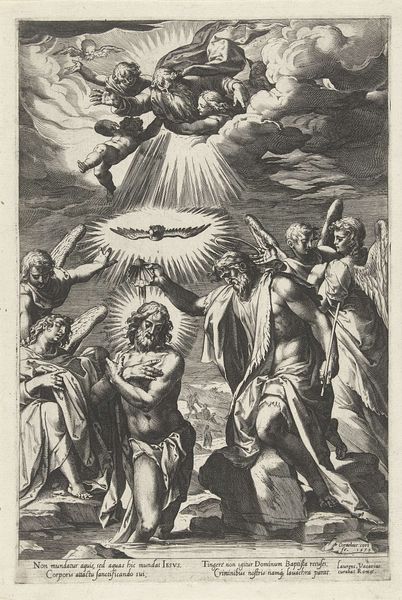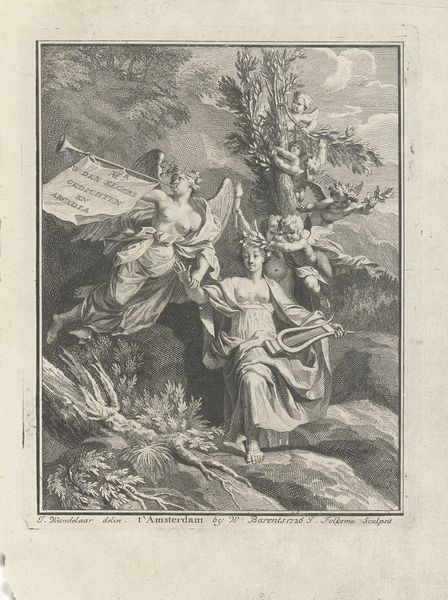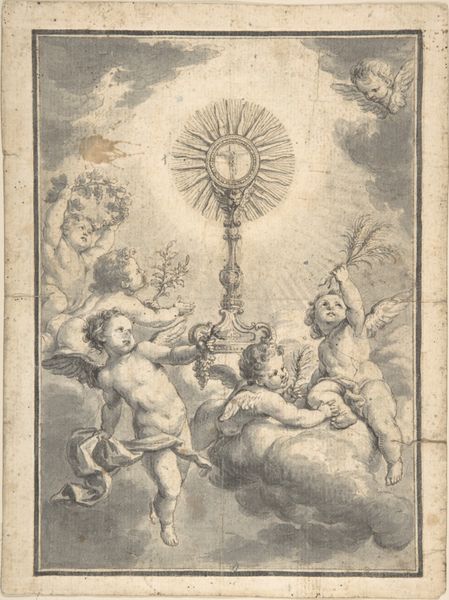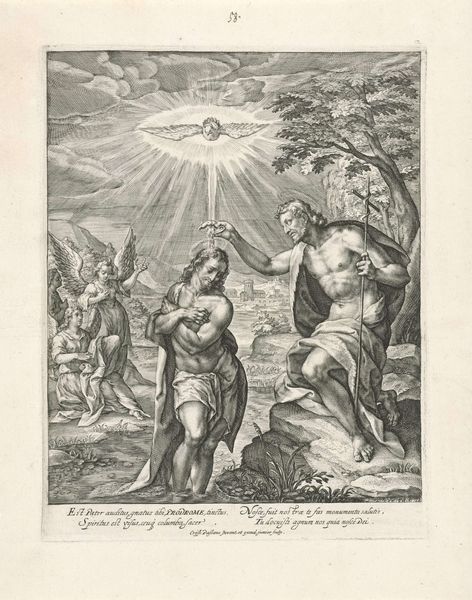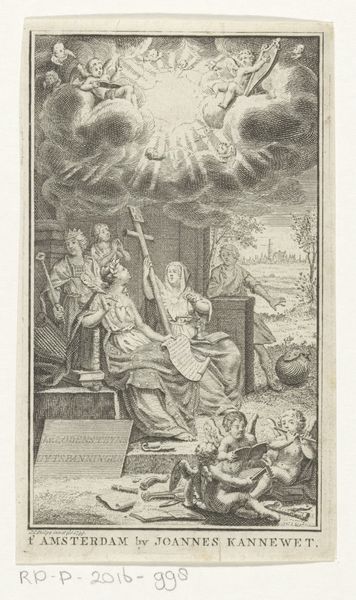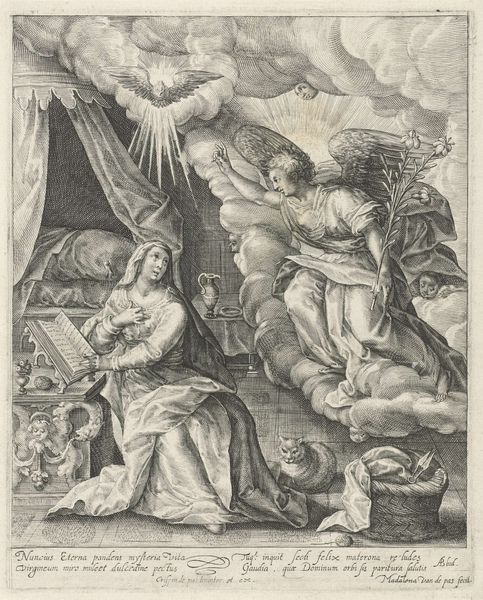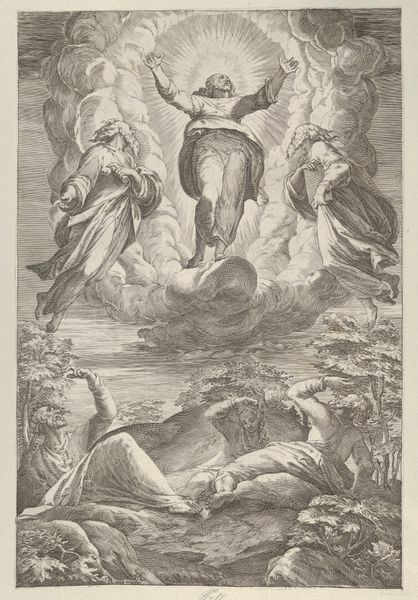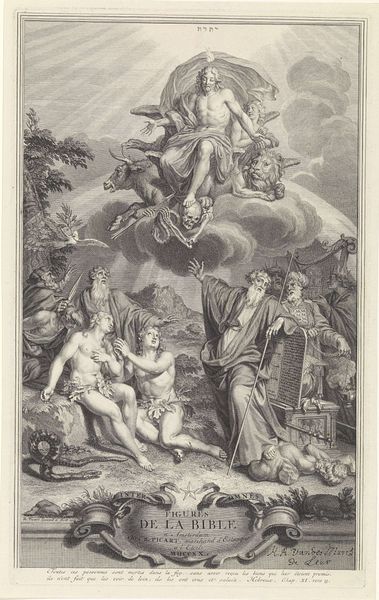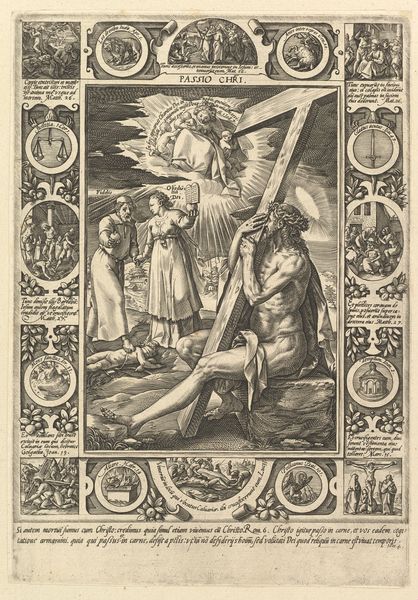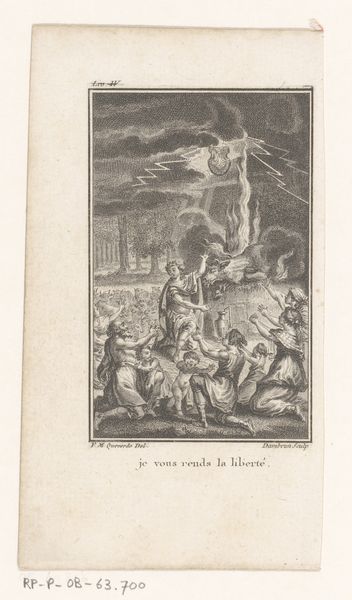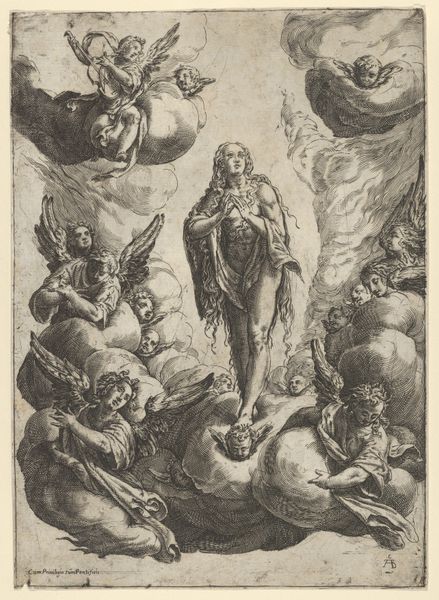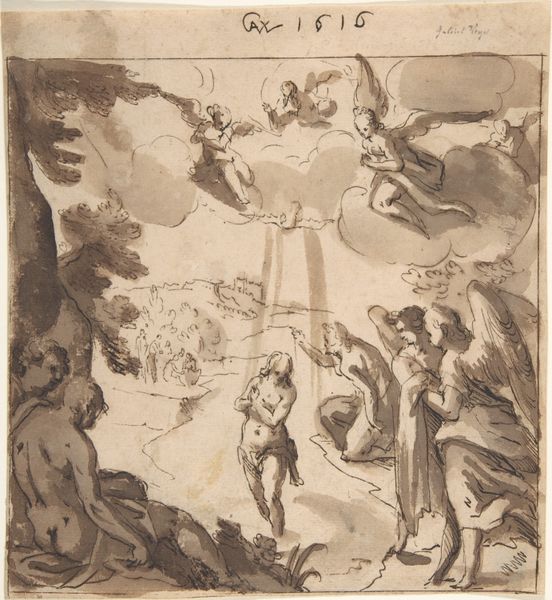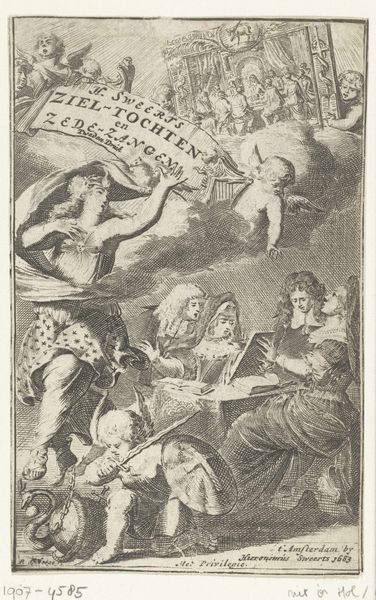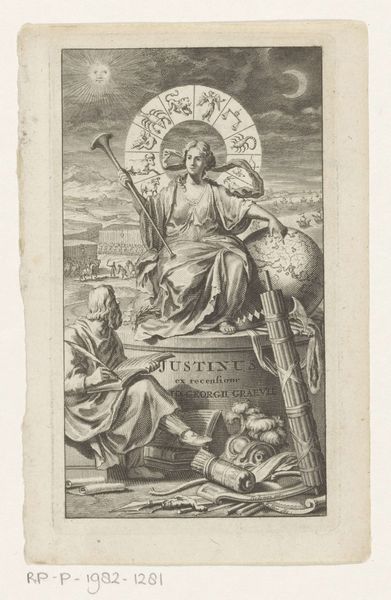
engraving
#
portrait
#
baroque
#
history-painting
#
engraving
Dimensions: height 181 mm, width 131 mm
Copyright: Rijks Museum: Open Domain
Curator: Editor: This is a portrait of Johann Arndt by Jan (II) Smit, made between 1741 and 1748. It’s an engraving and it feels… well, quite reverential. The Baroque style lends a sort of drama, with all the clouds and angels. What do you make of this piece? Curator: This engraving presents us with an intriguing intersection of religious devotion, social hierarchy, and the power of the written word. Consider Arndt's role: "General Superintendent." This title already tells us about the deep connection between religious authority and the power structures of the time. How might this portrait reflect the way religious leaders wielded influence in 18th century society? Editor: So you're saying it's not just a portrait, it’s also a statement about power? The way he's positioned almost floating with angels, really emphasizes that idea. Curator: Precisely. Now, notice the Hebrew characters at the top and how the angels frame him. What might those visual choices communicate to its contemporary audience about the subject’s perceived connection to the divine? Editor: I guess they would've immediately recognized it as a link to God, emphasizing his holiness, and, by extension, his authority? And the text below describing his books would show the source of his knowledge and wisdom. Curator: Exactly. And that's where the cultural studies angle really comes into play. We're not just looking at an image of a man; we're dissecting how religious identity and social status were carefully constructed and conveyed through visual rhetoric. What does considering art from this perspective do for you? Editor: It's more than just aesthetics; it’s like unlocking a whole other layer of understanding. I thought it was a nice looking portrait before, but now I realize there’s a lot of social commentary packed into it.
Comments
No comments
Be the first to comment and join the conversation on the ultimate creative platform.
